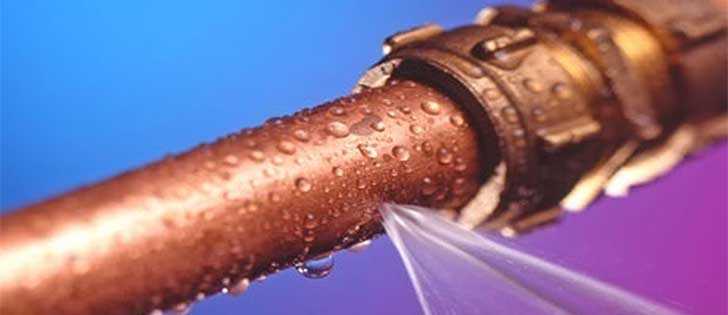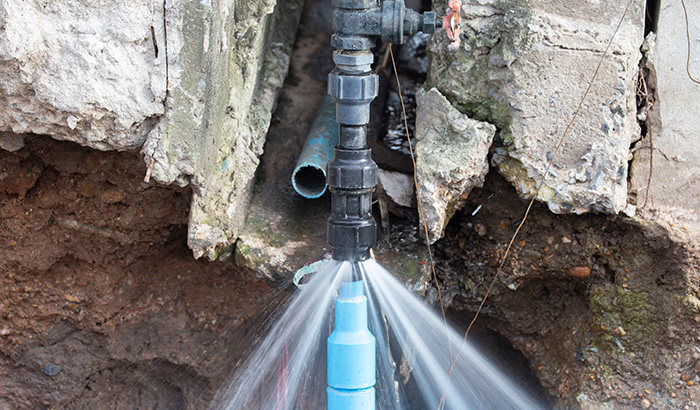Stopping Burst Pipes: Vital Tips to Secure Your Pipes
Protecting against burst pipelines is a critical worry for property owners, particularly during cooler months when the risk of freezing is enhanced. Applying strategic actions such as correct insulation, routine evaluations, and maintaining consistent indoor temperature levels can substantially lower the chance of pipeline failure.
Understand Pipeline Vulnerabilities
Comprehending pipeline vulnerabilities is essential for reliable plumbing maintenance and preventing expensive damages. Several factors contribute to the sensitivity of pipelines to ruptureds, consisting of material composition, age, and ecological problems. Older pipelines, specifically those made from galvanized steel or polybutylene, often weaken with time, leading to boosted danger of ruptures and leaks.
Temperature level fluctuations can likewise considerably influence pipeline stability. In cooler environments, water caught in pipelines can freeze, applying and expanding stress on the pipeline walls, which might ultimately bring about a ruptured. High water stress can strain pipes, specifically at joints and bends, heightening the possibility of failing.

Insulate Pipeline Properly
Appropriate insulation of pipes is critical for stopping cold and succeeding bursts during winter (burst pipe). Shielding your pipes system successfully safeguards against temperature goes down that can bring about costly damage. Begin by identifying susceptible areas where pipes are exposed to outdoor temperatures, such as basements, attics, and exterior walls
Usage foam pipe insulation sleeves or wrap insulation tape around these areas to provide a protective barrier. Guarantee that all sections of the pipelines, specifically those with restricted warmth direct exposure, obtain adequate insulation. Pay special focus to fittings and joints, as these are a lot more vulnerable to freezing.
When shielding, it's essential to pick products that fulfill regional building ordinance and are appropriate for the specific atmosphere. Fiberglass insulation is typically recommended for its thermal resistance residential or commercial properties. Additionally, take into consideration using heat wires or tape in extreme conditions, which can be connected in to supply extra heat
Consistently check insulated pipelines for any kind of signs of wear or damage, as endangered insulation can lessen its performance. By taking these positive measures, you significantly reduce the danger of pipe ruptureds, ensuring a reliable pipes system throughout the winter months.
Maintain Constant Temperature
A steady indoor temperature is crucial for protecting against burst pipes throughout the cold months. When temperature levels drop, water within pipelines can ice up, increasing and developing stress that may ultimately cause the pipes to ruptured.Using a programmable thermostat can help handle indoor temperatures efficiently, making sure that rooms with plumbing remain warm even when the house is vacant.
This small circulation of water can stop cold by easing stress within the pipelines. By implementing these approaches, house owners can considerably minimize the danger of pipeline bursts and guard their plumbing systems versus the severe winter components.
Routinely Inspect Plumbing
Routine examinations of plumbing systems are vital for preventing burst pipelines and keeping overall home stability. Throughout these examinations, it is important to check out noticeable pipelines for signs of rust, leakages, or wear.
Additionally, checking joints and links is essential, as these factors are often vulnerable to leakages. click resources Homeowners ought to additionally assess water stress levels, as excessive pressure can strain the pipes system and enhance the threat of pipeline ruptureds.
Think about scheduling specialist pipes examinations at the very least once a year, specifically prior to winter season, to ensure your system is prepared for chillier temperatures. By being aggressive in your approach, you can safeguard your home versus the expensive and disruptive effects of burst pipelines.
Know Emergency Treatments
Recognizing emergency treatments is important for every home owner, especially after carrying out routine pipes inspections. Being prepared for a pipes emergency can substantially minimize damage and save expenses.
Following, maintain essential tools useful. A pipes emergency package need to consist of a wrench, bettor, and towels, in addition to a flashlight and a container for tiny leakages. In addition, take into consideration having the contact details for a trusted plumbing easily offered, ought to the situation rise beyond your control.
If you find a leak or ruptured pipe, instantly shut off the supply of water and inform your plumbing. Record the damages with photographs for insurance policy purposes. Understand the indicators of prospective plumbing issues, such as unusual water stress variations or damp areas on walls
Eventually, proactive knowledge and quick action are vital in managing plumbing emergency situations, ensuring your home remains protected and decreasing possible damages.

Conclusion
Finally, stopping ruptured pipes demands a diverse technique that consists of understanding pipe vulnerabilities, correct insulation, keeping consistent indoor temperature levels, normal evaluations, and expertise of emergency situation treatments. By carrying out these important approaches, the threat of plumbing failings can be considerably decreased, therefore making certain the durability and efficiency of the pipes system. Proactive actions not just safeguard against potential damage however also add to total water conservation and the security of residential property.
In chillier environments, water caught in pipelines visit their website can ice up, applying and broadening pressure on the pipe walls, which may eventually lead to a burst. When temperature levels decrease, water within pipes can ice up, developing and broadening pressure that may eventually trigger the pipelines to ruptured. By implementing these methods, house owners can significantly reduce the danger of pipe ruptureds and protect their pipes systems against the severe wintertime elements.
